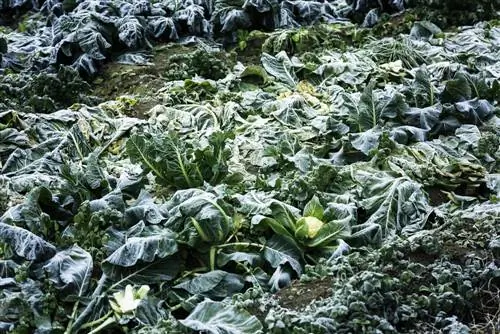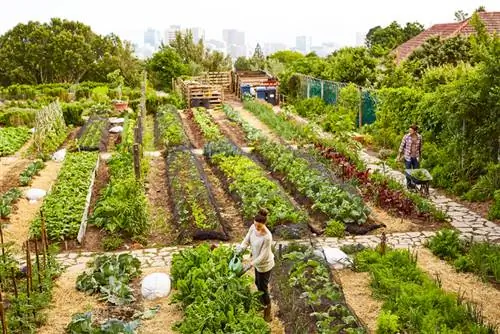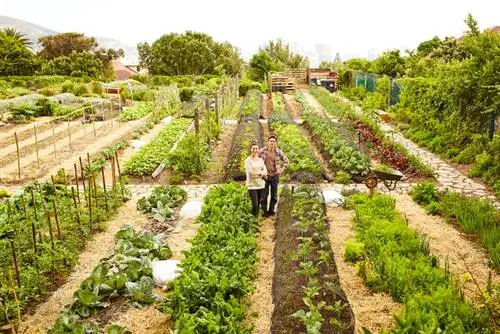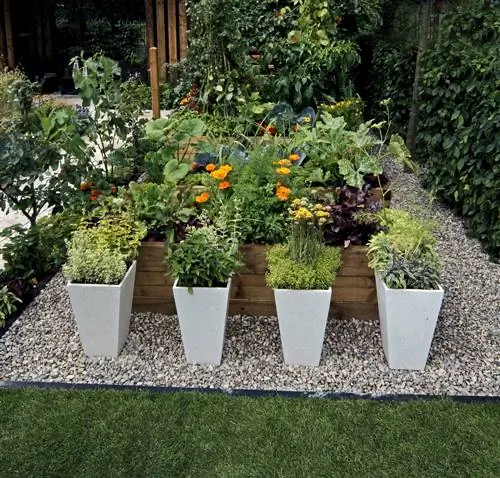- Author admin [email protected].
- Public 2023-12-16 16:46.
- Last modified 2025-01-23 11:21.
Even in the cold season, between December and February, garden owners do not remain idle. If you have taken precautions, you can still harvest fresh winter vegetables such as lamb's lettuce, spinach, winter purslane, kale and Brussels sprouts, winter savoy cabbage and cabbage as well as parsnips, salsify and Jerusalem artichokes until early spring - but only if the plants are not frozen. Apart from that, a vegetable garden also requires a minimum of care in winter, and the new season also needs to be planned and prepared.
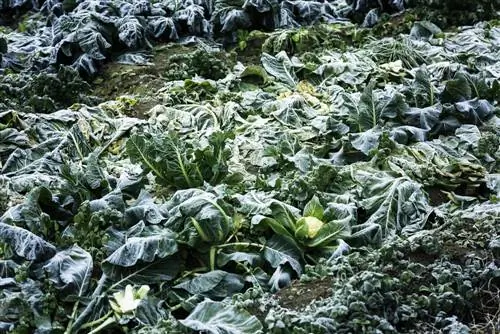
What can be done in the vegetable garden in winter?
In winter, planning for the coming season, soil care and preparation of the beds can take place in the vegetable garden. It is also possible to harvest winter vegetables and sow certain varieties in the greenhouse or cold frame.
Plan and prepare for the coming season
The winter months should be used to plan the cultivation of the vegetable beds. Now is also the right time to order your first seeds and plants from garden retailers. You can also look around the tree nurseries in January or February at the latest and get thorough advice. The next soil test is also due in February in order to optimally supply the garden with fertilizer.
Take care of your garden properly in winter
If the ground is frost-free and not too wet, you can dig it up once in January and February: This helps very well against the snails that overwinter in the ground, but also against other soil pests. If the soil is in the right condition, the first beds can be prepared in February and provided with compost or composted manure. The frozen green manure sown in autumn can also be incorporated. In January, but no later than the beginning of February, you should search fruit trees for the nests of moth larvae and bloodlice and carefully scrape them off. Also refresh or renew the white coats. Fruit and vegetable storage should be checked and ventilated regularly, removing anything that shows signs of rot or mold. The greenhouse and the cold frames must also be ventilated on warm and sunny days.
Sowing, planting and harvesting
In the greenhouse you can sow rocket, winter purslane and garden cress all winter long. From January onwards, early radishes and radishes will start to thrive, of course also in the greenhouse. Under favorable conditions, early carrots, radishes, radishes, spinach and onions can be sown outside with a fleece or foil cover or in a cold frame around mid-February. In the house, you prefer early varieties of cabbage from January onwards, and leeks, salads, tomatoes, parsley and chives from February onwards.
Tip
Help the birds through the cold season by providing species-appropriate food and regularly filling the drinking troughs with fresh water.

